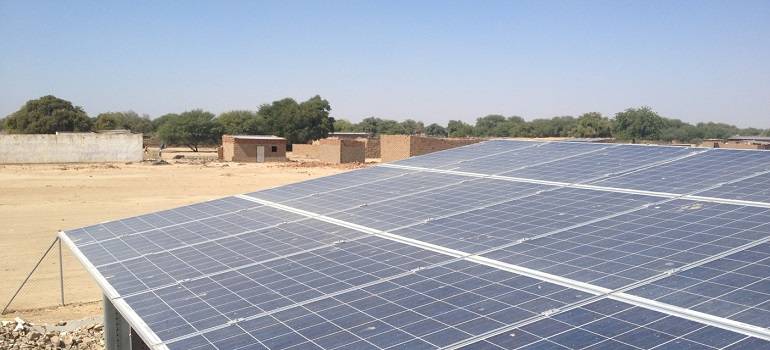CRMM could help build over 1 terrawatt (TW), or 1000 GW, of solar power generation capacity in low and middle-income countries by 2030

A USD 1 billion guarantee could crowd in up to USD 15 billion of investments for 20 gigawatts (GW) of solar PV capacity in more than 20 countries, says a study by Common Risk Mitigation Mechanism.
The CRMM is a multilateral market platform, which received initial support from 17 countries with high solar potential, including India, France, Australia, Mali, Namibia, and Nigeria.
The study was released yesterday at the India Pavilion at the COP 23 climate negotiations in Bonn, according to an officials statement here today.
It outlines the 20 GW plan as a pilot phase with its eventual aim to leverage billions of dollars of impact capital to catalyse USD 1 trillion of domestic and international private institutional capital, and transform global renewable energy markets.
If successful, the CRMM could help build over 1 terrawatt (TW), or 1000 GW, of solar power generation capacity in low and middle-income countries by 2030, it said.
ALSO READ: EESL and UK based Firm EnergyPro Limited Collaborate on New Renewable Energy Pact
A multi-stakeholder Taskforce comprising the Council on Energy, Environment and Water (CEEW), the Confederation of Indian Industry (CII), the Currency Exchange Fund (TCX), and the Terrawatt Initiative (TWI) designed the feasibility study on the request of 17 signatory countries of the International Solar Alliance.
The study also presents recommendations to governments of low and middle-income countries to accelerate their solar energy generation capacity, at scale and in local currency.
The idea is to develop a sustainable financial ecosystem, centred around an international guarantee mechanism, which could pool various types of risks and pool projects across many countries to lower the costs of hedging against those risks.
Financing of solar power generation assets in a majority of developing countries suffers from a lack of risk mitigation tools, a high perception of risk among investors, high transaction costs, small project sizes, and lack of scale, it said.
Source: PTI

